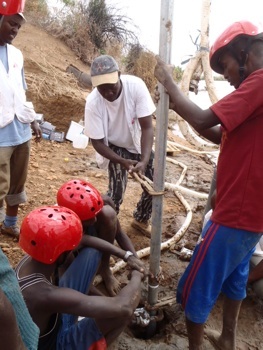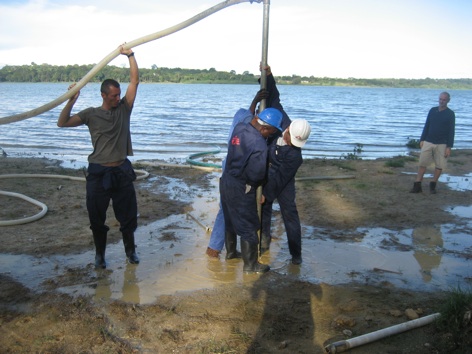Boreholes. It might not sound like the sexiest of topics, but in disasters, boreholes –and being able to access clean water in the middle of nowhere – really is a life and death issue.
The ongoing drought and food crisis in East Africa, which has claimed thousands of lives since it first hit the headlines last summer, is exactly the kind of humanitarian emergency where effective, clean, water provision relies on ingenuity, quick thinking and skilful engineering.
Why? Because many of the refugee camps to which tens of thousands of people have fled, escaping poor harvests and years of conflict in their native Somalia, are located in the middle of a desert.
I’m talking about places like Liben in southern Ethiopia. Home to about 120,000 people at the height of the crisis, it’s a bit like a fiery dustbowl. Very hot, lots of sand and strong, oven-like winds. And no clean water.
Though there are a few rivers winding their way through the desert, they’re dirty, full of silt and dust and pose more of a health hazard than a solution.
And so began our recent mission to drill boreholes – basic, narrow wells – to supply clean water to one of Liben’s field hospitals. When you’re catering for the needs of thousands of refugees who are malnourished, weak or sick, there’s no option but to get on with it.
One of the first rules of humanitarian engineering is that, often, methods we would happily use here in the UK simply do not apply. So, we couldn’t have flown in a huge drilling rig – it costs far too much. Second, Liben is nowhere near an international airport, and transporting kit across miles of desert is a definite a no-no.
Our solution was much simpler: borehole jetting. It’s not a technique that is widely used, but in a humanitarian setting – and providing you’ve got the right soil composition – it’s perfect.
But jetting, or driving water at high pressure through the ground to create a narrow hole, needs water in the first place. Though dirty, the filtered river water pumped at high pressure through a pipe, a bit like a scaffolding pole – and straight into the ground – is the perfect cutting machine.

Location is important, too. By positioning the boreholes 20 metres from the river’s edge, we knew we would hit water relatively quickly. As it turned out, in no time at all – perhaps an hour – we gradually fed nine metres of galvanised pipe, each screwed into the next, vertically into the ground.
At that depth we stopped, jetting water for longer to create a well chamber. Before we knew it, water gradually began seeping into the well chamber - and we reversed the pump.

Filtered through the sand, the water from the well was finally delivered to the surface: clean, clear and almost good enough to drink. Once properly treated it was as good as any water from a UK tap.
Just 72 hours later and with 6 boreholes drilled, we began supplying 130,000 litres of water daily, mainly to the camp’s hospitals, but with plenty more to spare.
In so many places where water is scarce, like Yemen’s capital Sana’a, or in rural areas of Zimbabwe, boreholes are often the only way to get water to people who desperately need it. MSF have drilled for water in both locations – and all over the world.
Though you can’t always use jetting – it wouldn’t work in either Yemen or Zimbabwe due to the ground composition – when you can, it saves lives fast. In the face of conflict, drought, disaster or famine, simple engineering solutions often provide the most important life-line. For the people of Liben, fresh, clean water couldn’t have come a moment too soon.
For more information on RedR, visit its website.
![]()





JLR teams with Allye Energy on portable battery storage
This illustrates the lengths required to operate electric vehicles in some circumstances. It is just as well few electric Range Rovers will go off...